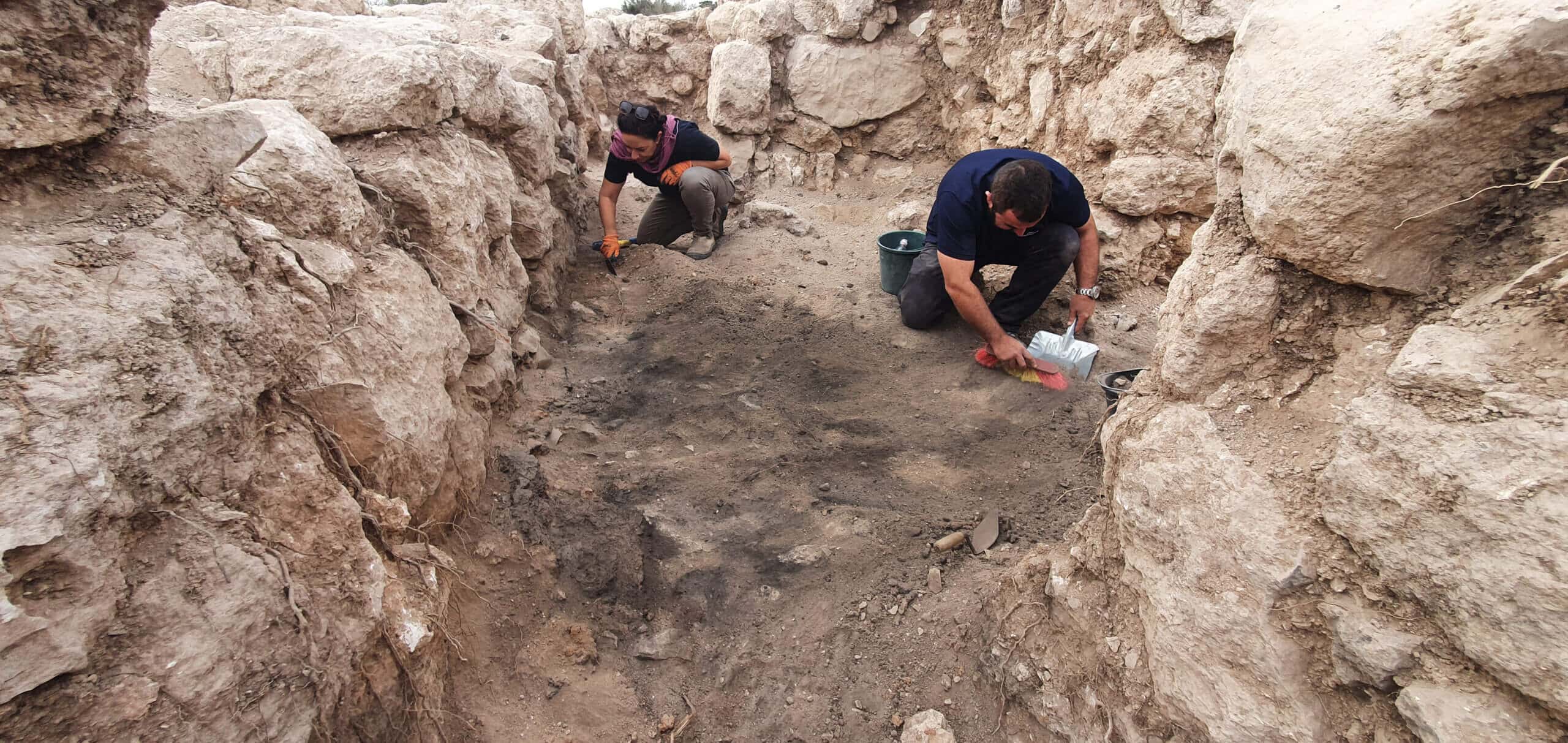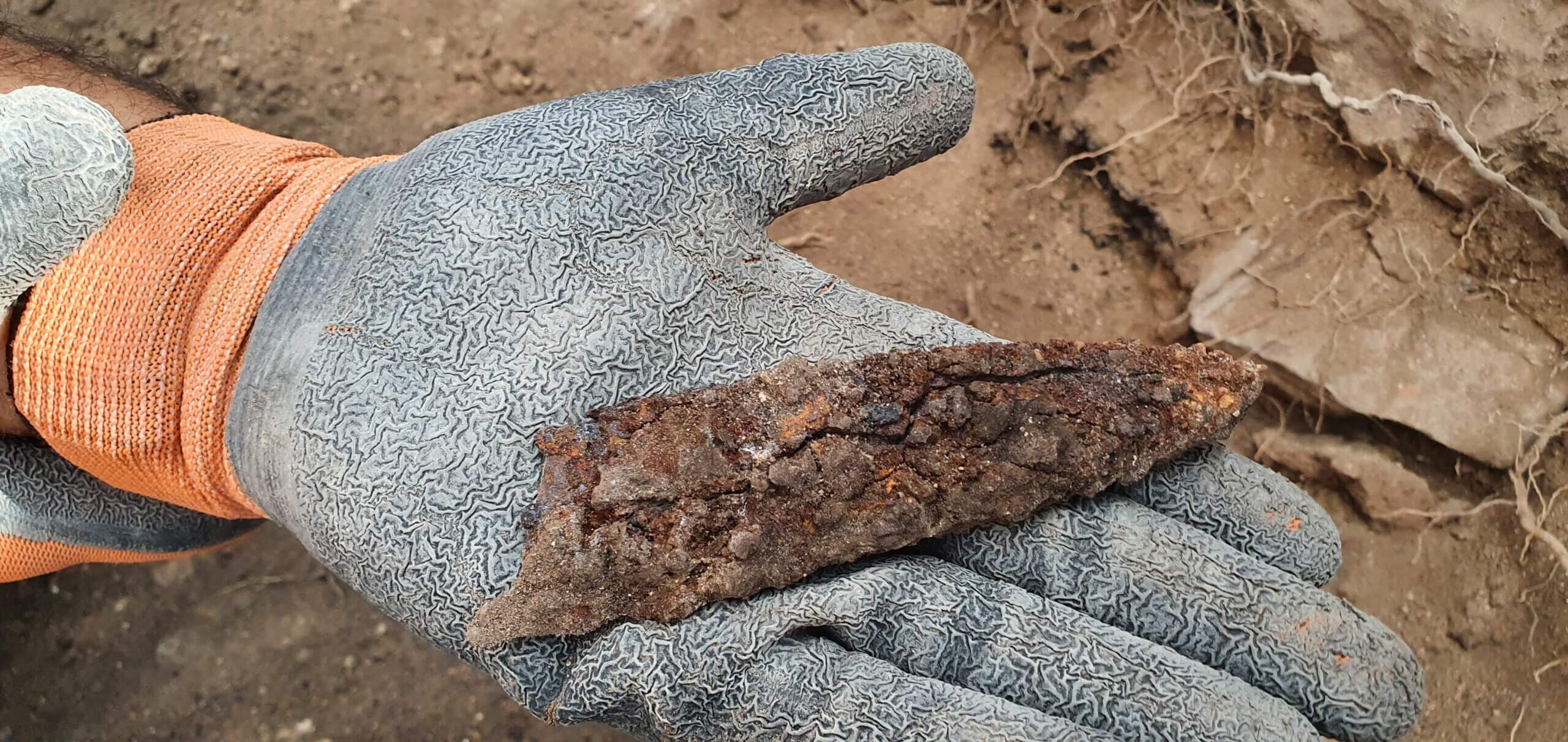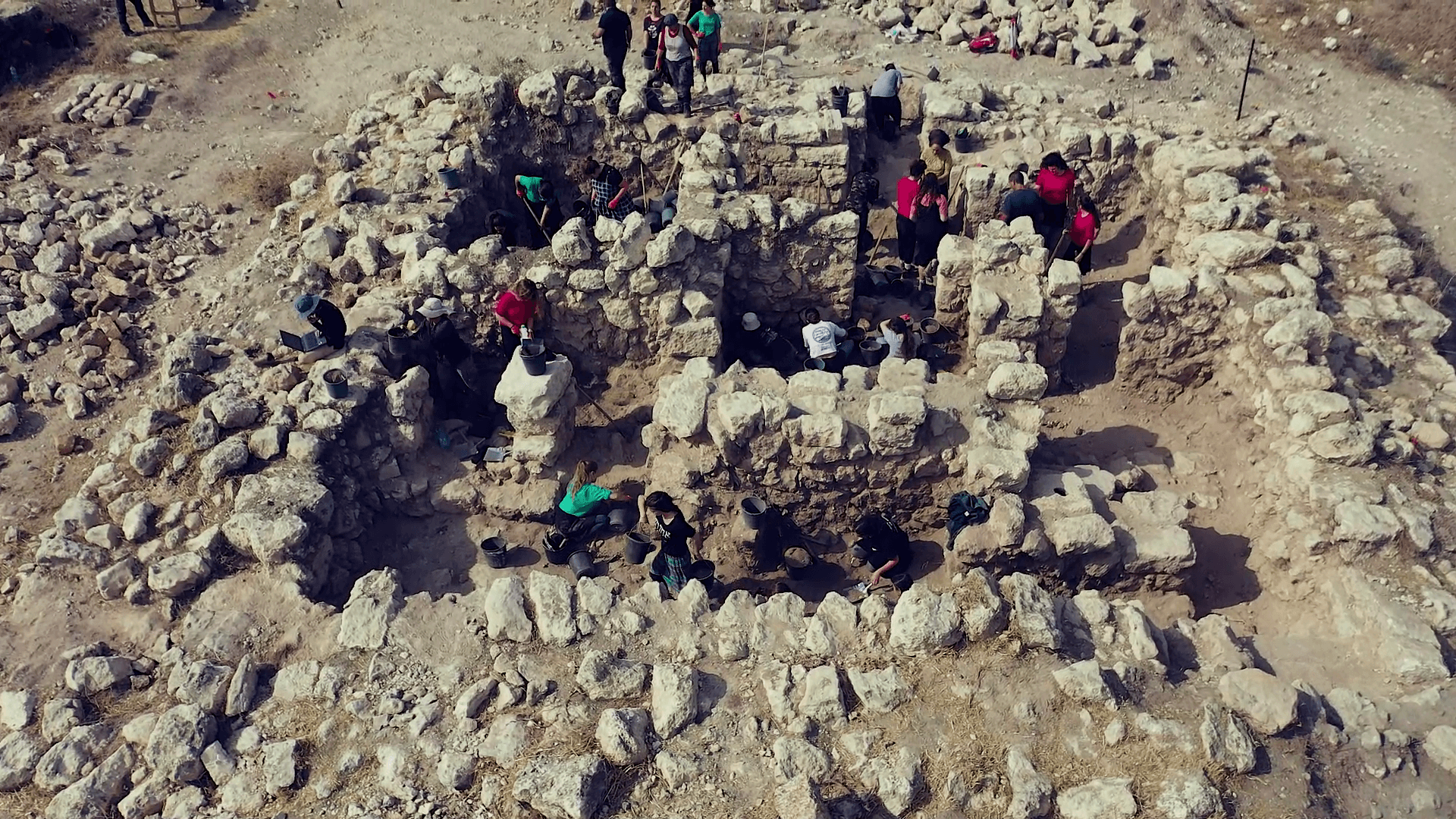"The destruction of the building is probably related to the conquest of the area by the Hasmonean Yochanan Hyrcanus, around the year 112 BC," say archaeologists of the Antiquities Authority, who conducted the excavation with the funding of a landmarks project at the Ministry of Jerusalem and Heritage, and with the participation of students from the Land of Israel Studies and Archeology program at the Ministry of Education

Weapons, burnt wooden beams, dozens of coins and a fortified structure from the Hellenistic period - tangible evidence of the battle that took place between the Hasmoneans and the Seleucids about 2,100 years ago, are being uncovered these days in the excavations of the Antiquities Authority in the Lachish Forest area. The excavations are being carried out as part of the project to establish the 'Road of the Kings of Judah' in collaboration with the Kimat Israel Foundation, funded by the Jerusalem and Heritage Ministry's Landmarks Project, and with the participation of students majoring in Israel Studies and Archeology of the Ministry of Education and students of the Asher Ruh Bo Preparatory School for at-risk youth from Mitzpe Ramon.
According to Sa'ar Ganor, Valdik Lifshitz and Ahineam Montague, the dig managers on behalf of the Antiquities Authority, "The site we uncovered illustrates, in practice, the stories of the Hanukkah holiday. It seems that we have discovered a building, which was part of a system of fortifications erected by the commanders of the Hellenistic army - to protect the great Hellenistic city of Marsha from a Hasmonean attack. But according to the findings in the field, the Slovak defense did not succeed; The structure we discovered underwent significant destruction and burning by the Hasmoneans."

The excavation revealed a building measuring 15 x 15 m, which was designed as a well-fortified unit. The outer walls, which are no less than 3 m wide, were built of large stones, and an outer wall with a sloping shape, which protects against climbing. In its interior, the fortified building is divided into seven rooms, which have been preserved to an unusual height of about 2 m. The excavation revealed a staircase, which led to a second floor, which did not survive. It can be estimated that the height of the building was about 5 m.
The site where the fortified structure was uncovered, lies at the top of a high hill, which dominated the main road that passed through the Lachish stream, and which, in ancient times, connected the coastal plain to the central mountain avenue. From the building you can overlook Marsha - the largest city in the region, which was the capital of Adomia during the Hellenistic period.
They participated in the excavation Students of the Israel Studies and Archeology majors of the Ministry of Education, from schools in Be'er Sheva, Dimona and Nitzan, and this - as part of the activities of the estate, education and bringing together the community led by the Antiquities Authority. The students discover their history "through the hands", as part of their studies for the matriculation certificate in the profession and turning the archaeological dig into a learning scientific laboratory. Also, my students took part in the excavations Prepares "Asher Spirit Bo" for youth at risk from Mitzpe Ramon, and this as part of a week aimed at making a significant contribution to the community.
During the excavation, thousands of large stones were removed, which collapsed from the upper part of the building. A layer of intense destruction, about half a meter thick, was discovered from the bottom. Within this layer, hundreds of artifacts were discovered - including pottery, sling stones, iron weapons, burnt wooden beams, and dozens of coins that can be dated to the end of the second century BC. "Based on
Based on the findings and the coins, the destruction of the building can be attributed to the Hasmonean Yohanan Hyrcanus' conquest of the Adomia area, around 112 BC," say the archaeologists.
The Hasmoneans, who started their rebellion against the Hellenistic rule and the House of Seleucus, following the decrees of Antiochus IV and harming their Jewish way of life, fought many battles against the Seleucid army. The conquests of Yochanan Hyrcanus, described in the book of Maccabim and by the historian Joseph ben Mattathias, led to the expansion of the Hasmonean state to the south.
According to Eli Escozido, director of the Antiquities Authority, "The stories of the Maccabees are resurrected before our eyes, and this is the magic of the work of the Antiquities Authority: the archaeologists, through hard and strenuous work, breathe life into the pages of the history of the peoples who passed through this land. In a few days we will celebrate the Hanukkah holiday, centered on the victory of the Hasmoneans over the Hellenists, which then, for the first time, led to the establishment of an independent and sovereign Jewish entity. The Hasmoneans certainly could not have imagined that in 2,000 years, students living in the State of Israel would follow in their footsteps. It's unusually exciting."

Minister of Construction and Housing, Jerusalem and Heritage, Zeev Elkin: "The impressive discoveries in the excavation project in the Lachish region present and illustrate the story of our wonderful and special country and the story of Hanukkah. The 'Landmarks' project led by the Ministry of Jerusalem and Heritage under my leadership, brings about the change and development of the heritage and history sites in our country every day. During the upcoming Hanukkah holiday, we will celebrate Heritage Week all over the country, and I invite the whole public to come connect, discover and be excited at the heritage sites in Israel."
Minister of Culture and Sports, Hili Trooper: "The new and fascinating discovery of the Antiquities Authority is a typical example of how well-known and beloved heritage stories turn into historical and archaeological stories. The unveiling of the structure reflects the glorious roots of the Jewish people in the Land of Israel and practically illustrates the stories of the Hanukkah holiday. The importance of the event received another leap, when dozens of teenagers participated in the excavations, who received a rare opportunity to meet face to face with the history of the Jewish people. The Ministry of Culture and Sports will continue to support this important enterprise of heritage, history and culture."
At the end of the excavations, the building will undergo preservation and development, and it will be opened to the general public in cooperation with the Southern Region of the Kimat Israel Fund, as one of the visiting points on the "Road of the Kings of Judah" that is stirring skin and tendons these days.
More of the topic in Hayadan:
- Yehuda the Maccabee, Shimon Hatersi, Jonathan Hagadi - why did each of the five sons of Matthew call himself by a different nickname?
- The Hasmoneans - part XNUMX and last: Agrippa II - finished and not finished
- The revolt of the Maccabees as an expression of frustration and political revolution
- A Jewish site from the Hasmonean era was uncovered in archaeological excavations in the Sharafat neighborhood of Jerusalem
- Everything we wanted to know about the Hasmoneans and were ashamed to ask - 1: We prayed to this hero?!

One response
Did they manage to burn down a stone building? Truly a Hanukkah miracle